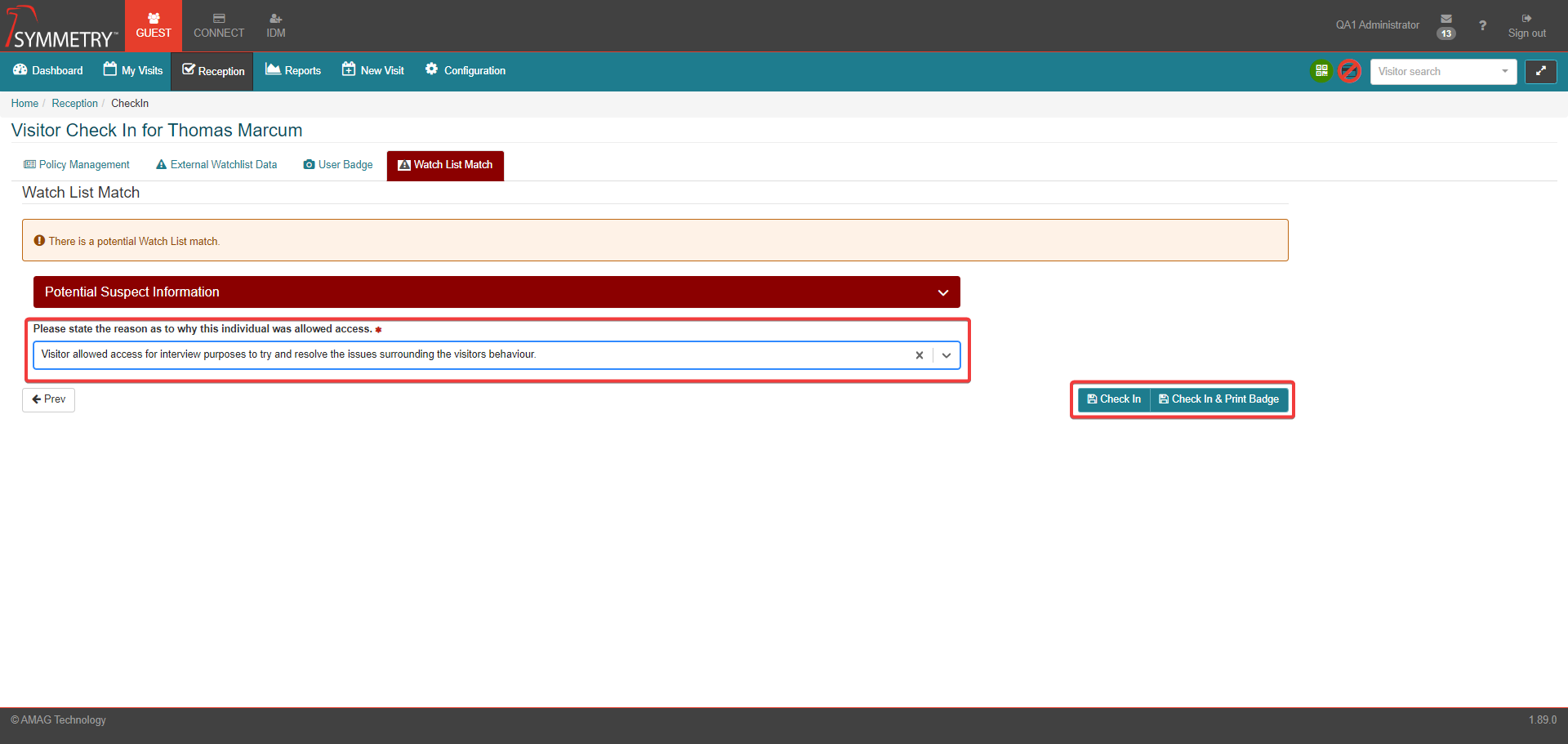Reception Desk - Visitor Check-In/Check-Out
The visitor check-in and check-out process can be configured in a variety of different ways to meet the specific needs of each individual GUEST customer. Some high level examples of different options include:
The Visitor could be required to scan an ID, or QR code from the visitor registration email.
The Visitor could have to acknowledge security policies, or sign an NDA (Non Disclosure Agreement).
The Visitor could be issued an access card, or a standard visitor badge with a barcode printed on it. At a high-level GUEST provides two ways for visitors to check-in:
Visitors can check-in at the reception desk with the assistance of the receptionist. This option makes use of the GUEST Reception tab within the application.
Visitors can check-in at a Self-Registration Kiosk. The kiosk interface is typically deployed onto a mobile tablet with a touch screen, allowing visitors to check themselves in without any assistance.
Note
GUEST also supports a combination of 1 and 2 above, where the visitor registers themselves at the kiosk and proceeds to the reception desk for final check-in.
GUEST Reception:
Note
Access to the Reception tab in GUEST requires the Reception User Role. Even administrators of the system must have this role in order to access the Reception tab.
Note
Images in this section show the access rights for available sections/tabs/pages for a user that has full access rights. A Reception user will not see Reports or Configuration.
The GUEST Reception page allows users to view a list of all registered visitors that have not arrived, are on premises (arrived but not checked-in), In Building (checked-in), are awaiting check-out or have checked-out. The user is able to filter the list by date range, Building, Status (Not Arrived, In Building, Checked-Out etc.), or Host Company. The user can also search for the specific visitor by typing in the search box.
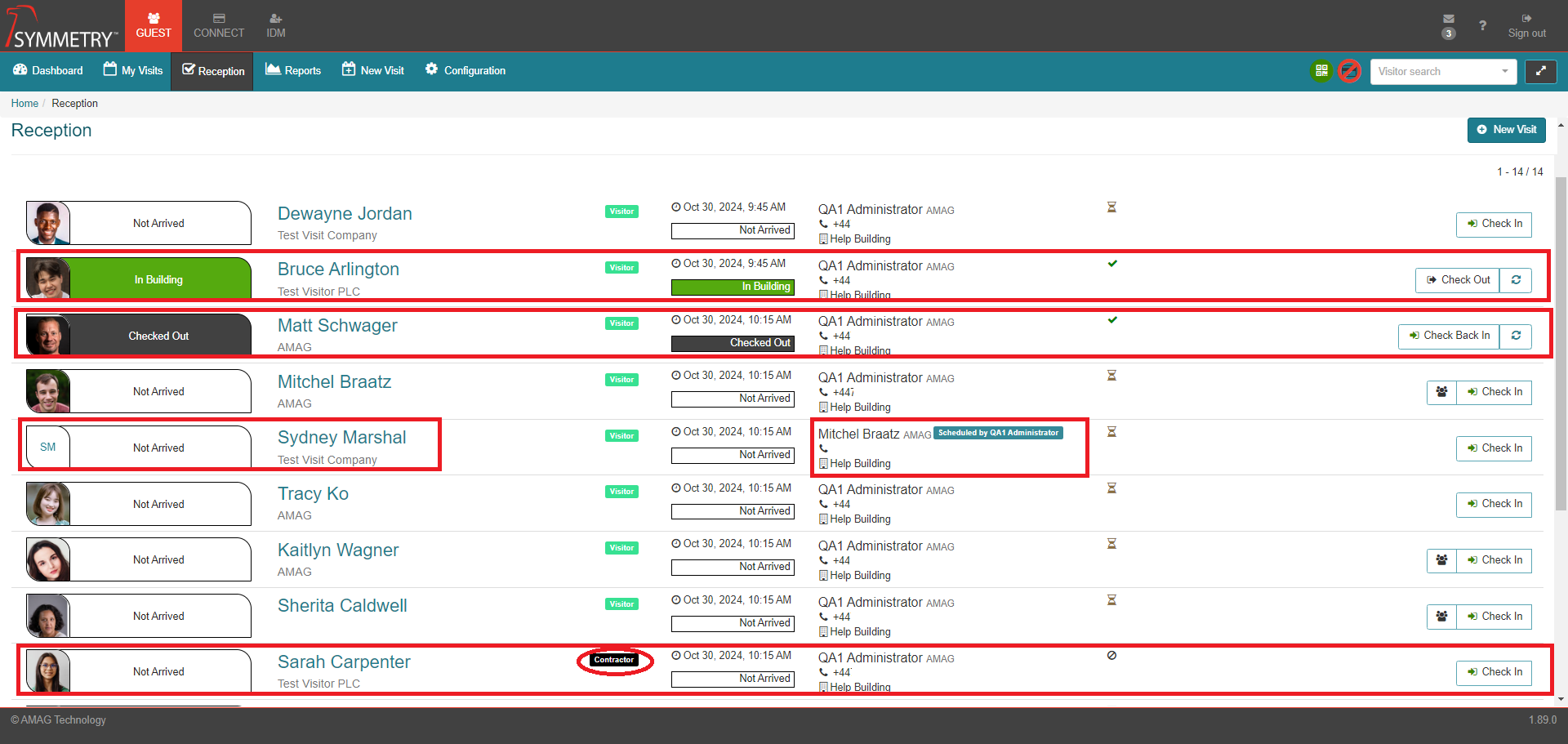
The Image above shows a list of visitors.#
One visitor (Bruce Arlington) is displaying the In Building (currently checked-in) status.
Second visitor (Matt Schwager) is displaying the Checked Out (currently checked-out) status.
The remaining visitors have Not Arrived.
The majority of the visitors were assigned the Visitor visit type status. One visitor (Sarah Carpenter) is a Contractor). Depending on configuration of the system, this user could have a different check-in process, or receive a different badge type etc.
The visitor Sydney Marshal was registered by the logged on user (administrator user in this scenario), but the Host for the visit is Mitchel Braatz. This is because the logged on user (administrator user in this scenario) registered this visit On behalf of Mitchel Braatz (as a Host Delegate).
The visitor list can be filtered by a variety of options, including:
Date: Changing the date range will show the registered visitors for the selected date range.
Building: The user can filter the list to show the visitors registered for each specific Building. Individual or multiple buildings can be selected. Please note that the Reception User will only be able to filter the list according to the Buildings assigned to them as part of user role configuration.
Status: The user can filter the list of visitors by status:
Awaiting Checkout: Visitor is awaiting to be checked-out.
Checked Out: Visitor is currently checked-out.
In Building: Visitor is currently checked-in.
Not arrived: Visitor is registered, but not checked-in yet.
On premises: Visitor is registered and on the premises but the visit is pending approval. The visitor cannot be checked-in until the visit has been approved.
Host Company: The list of visitors can be filtered according to the Company assigned to the Host.
Past Check Out: Provided at least one Visit Type has been configured to Flag Checked-In visits that are past their departure date , user can also filter on Visits that have passed Checkout Time. If toggled to ON, user will just see Visits with the Status In Building or Awaiting Checkout.
The user can perform a manual search to find the visitor they are looking for, by using the type to search field. The user can start typing in the First Name, Last Name or Company Name of the Visitor, Host or Host Delegate, and the results are displayed automatically.
The user can also sort the list (in ascending or descending order) by the following options:
Visitor First Name
Visitor Last Name
Visitor Company
Arrival
Departure
Visitor Status
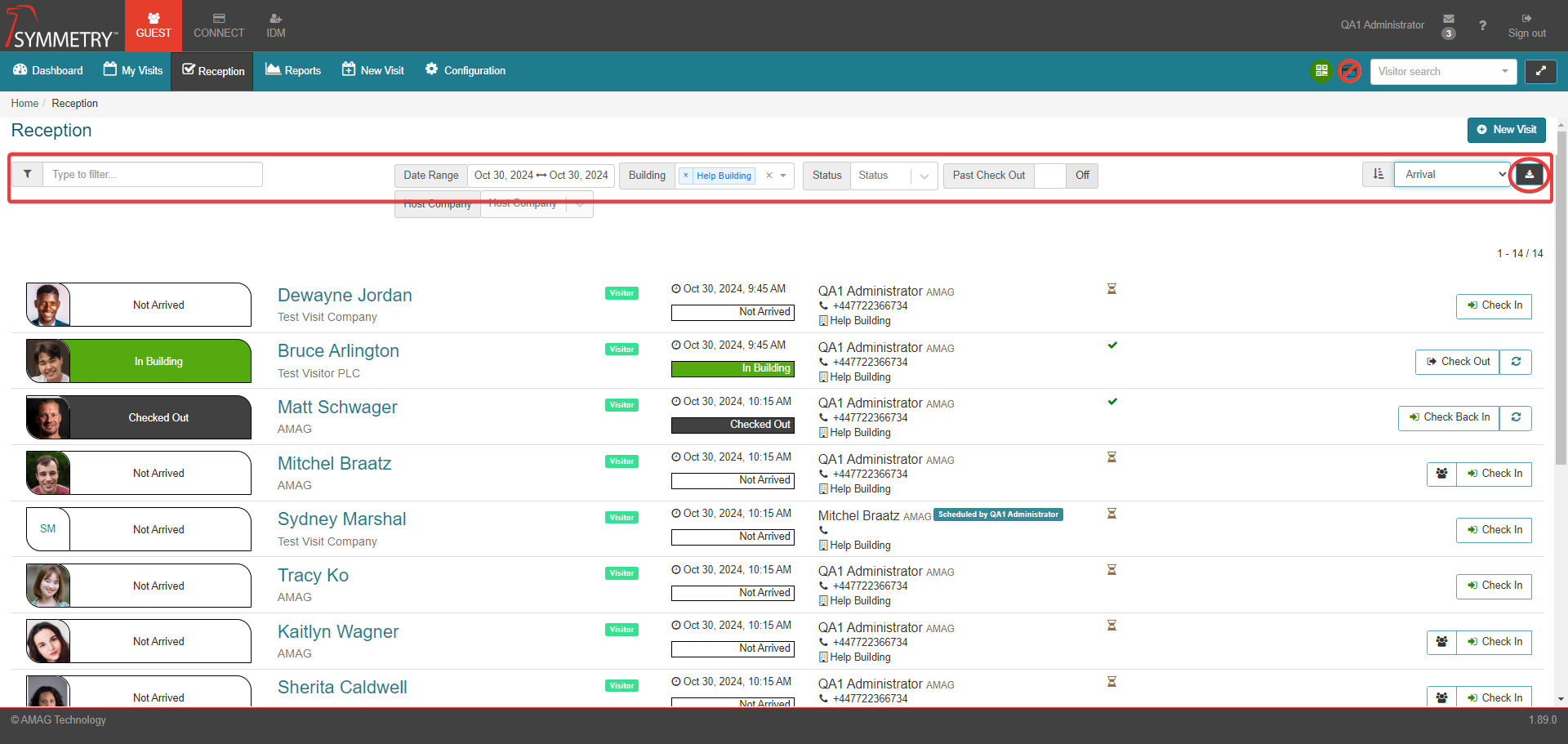
There is also the option for the user to download the visitor list as .csv file. Clicking the Download icon button will automatically download the list and be exported to an Excel Spreadsheet file (Excel or an appropriate viewer is required to view the list).

Basic Visitor Check-In
To check-in a registered visitor via the GUEST Reception Tab:
Locate the visitor within the list.
Click the Check In button.

Provided not all fields in Check-In Screen Configuration have been set to Hide, user will alight on Info page where they can provide basic details of the visit. They then click the Next button to move on to the User Badge page.

In the default configuration, the user can capture a photo (this can be optional/required) and print a badge for the visitor during the check in process. The badge template is typically pre-selected based on the Visitor Type and Building. The user can then click on the Check in button or Check In and Print Badge button.
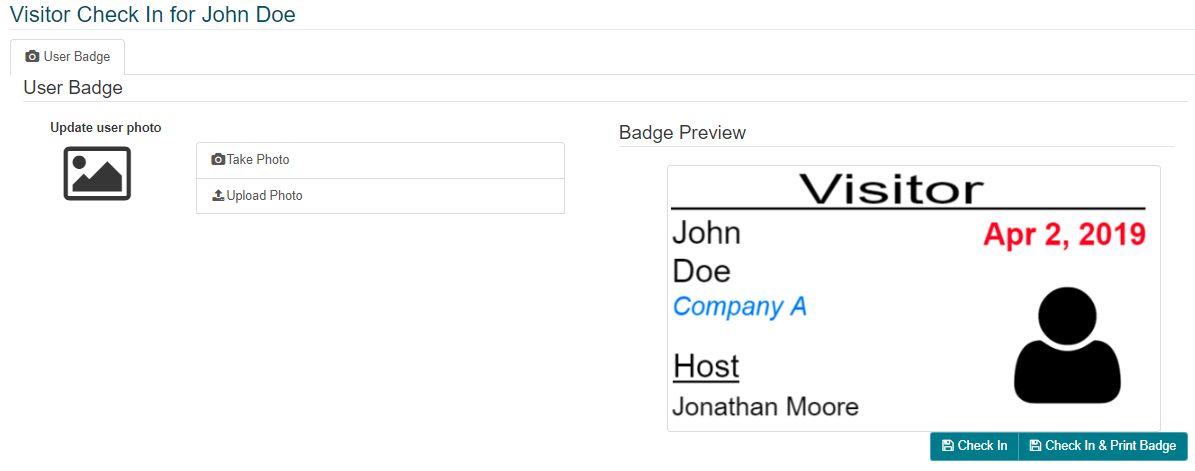
If this is a returning visitor, their previous photo may be available for re-use.
Note
GUEST supports most windows-compatible web-cameras and printers. Installation and configuration of recommended peripherals is covered in a separate document.
Once the visitor has been checked in, their status will change to In Building. The host typically receives an email and/or text message letting them know the visitor has arrived.

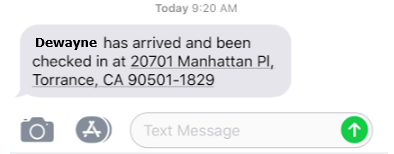
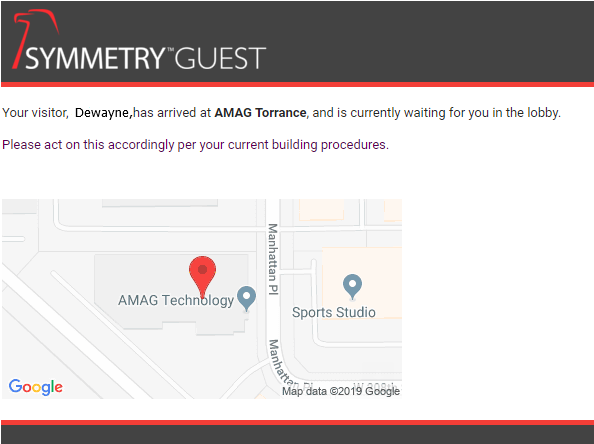
Additional Check-In Options:
The previous section describes the process for a basic visitor check-in. This section describes some additional features and functionality that may be available during the check-in process. These functions are all configurable options within the check-in process and are all available in the base system offering.
Lobbies:
If configured the Reception User will need to select the specific lobby where the visitor checked-in. This function is used for situations where a visitor may check-in at multiple lobbies and the specific lobby is unknown ahead of time.
During check-in the user will select the lobby. This field will keep the current selection for all future visits.

For more information please review the Lobbies section of this guide.
User Defined Fields:
An administrator may configure various User Defined Fields that may be required or optional during the check-in process. UDF’s may be used to capture a wide variety of custom data from the visitor. These fields may appear in a variety of different formats including text, drop down, check boxes, date and time etc.
The user will need to complete any User Defined Fields as part of the standard check-in process.
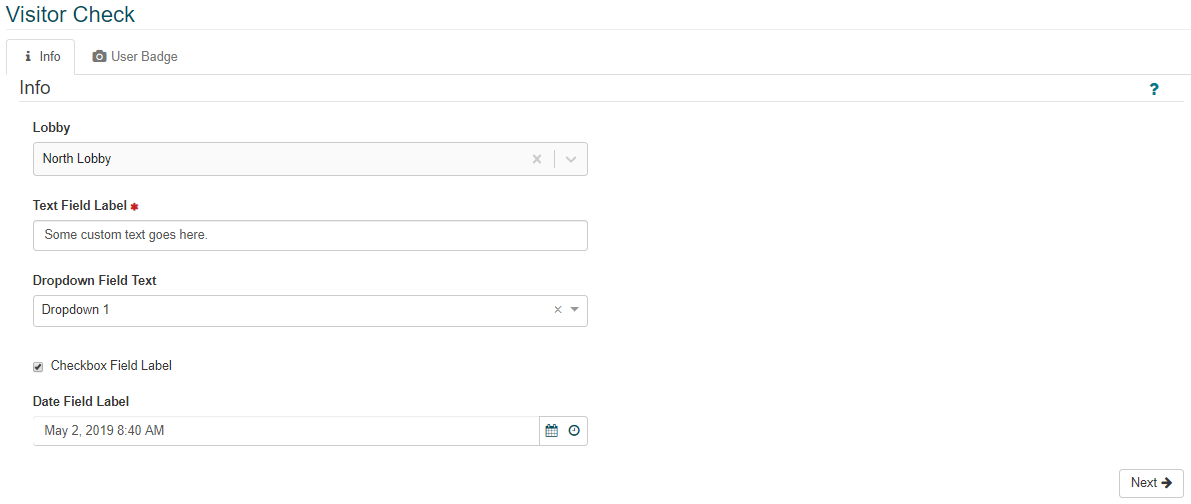
For more information please review the GUEST User Defined Fields section of this guide.
Symmetry Access Control Integration:
While not required, GUEST can be integrated with AMAG’s Symmetry Access Control System, allowing visitors to be given an access card with limited access rights, according to the type and location of their visit.
During check-in a visitor can be issued an access card, or a barcode can be printed on their visitor badge. GUEST will push the visitor record (along with their access card/barcode and associated access rights) into Symmetry, allowing them limited access within the facility.
GUEST will automatically remove the visitor from Symmetry immediately when they are checked-out, ensuring that no visitor retains any level of access once they have left the facility.
If a specific Visitor Type is configured to provide access to a visitor, the user may be required to issue an access card to the visitor during check-in. The access card number can be entered manually, or a card reader can be used to read the number from the card.
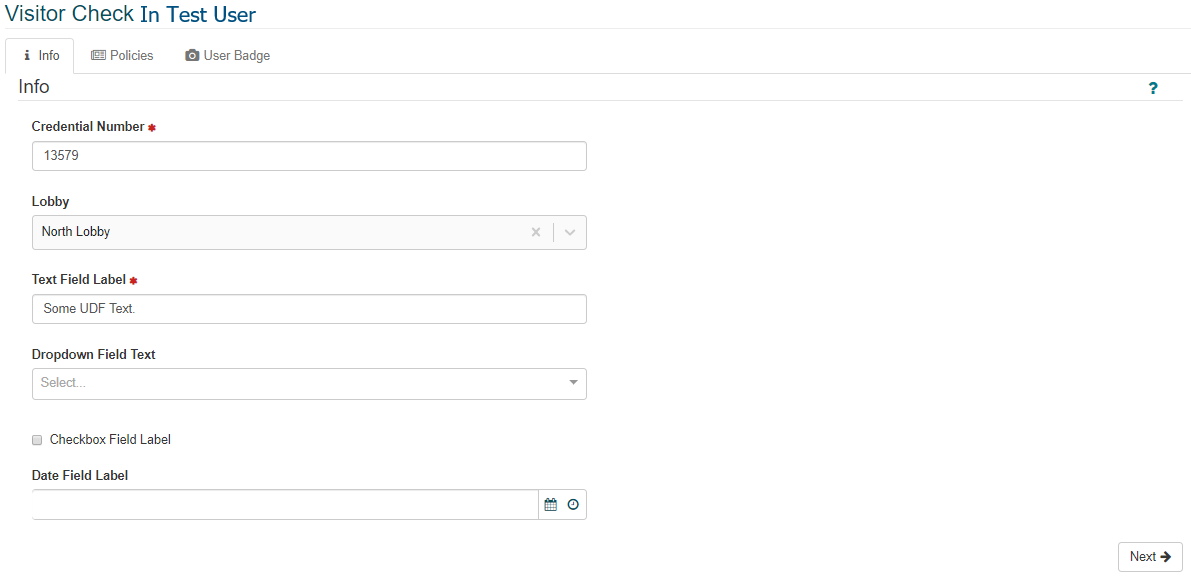
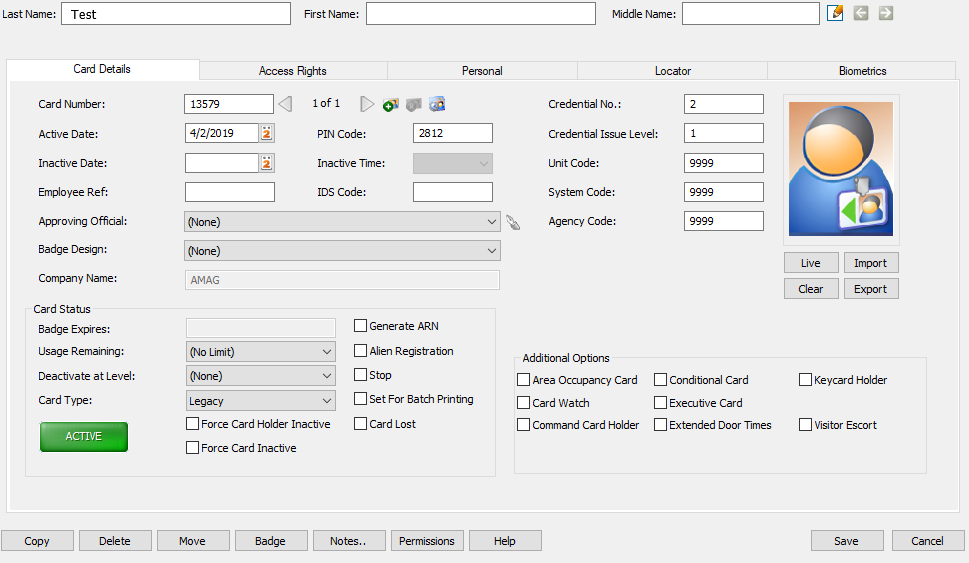
Note
No action is required if a barcode is issued to the visitor instead of an access card. The barcode is printed on the visitor badge and pushed into Symmetry Access Control automatically.
For more information please review the Access Control Integrations section of this guide.
Visitor Policies and Guard Assist Portal:
GUEST allows for policies (for example, Non-Disclosure Agreements, Security Policies etc.) to be assigned to specific Visitor Types and Locations. When the relevant visitor checks in, they will need to acknowledge and/or sign the policies or they will not be able to check-in.
There are two options for completing visitor policies during the check-in process at the reception desk:
User accepts acknowledgment of the policy on behalf of the visitor: This option allows the Visitor Management Officer to check a box indicating acceptance of the specific policy on behalf of the visitor.
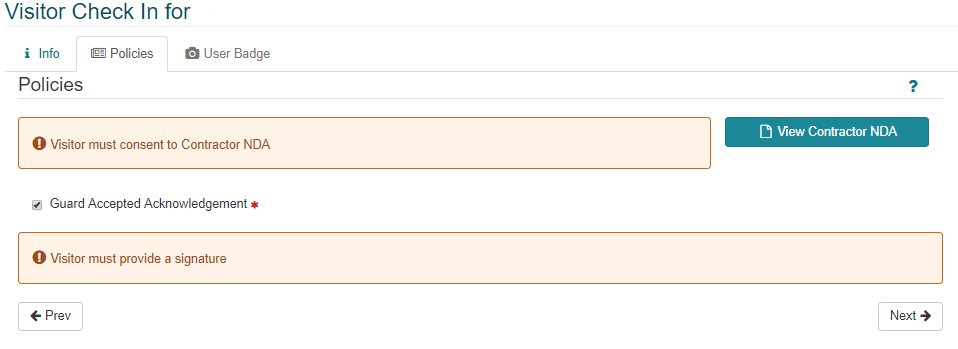
Guard Assist Portal (Recommended Option): The visitor is able to view their visit details and policy documentation on a mobile tablet. They are able to review the documentation, then provide acknowledgment and/or signature in order to complete the process.
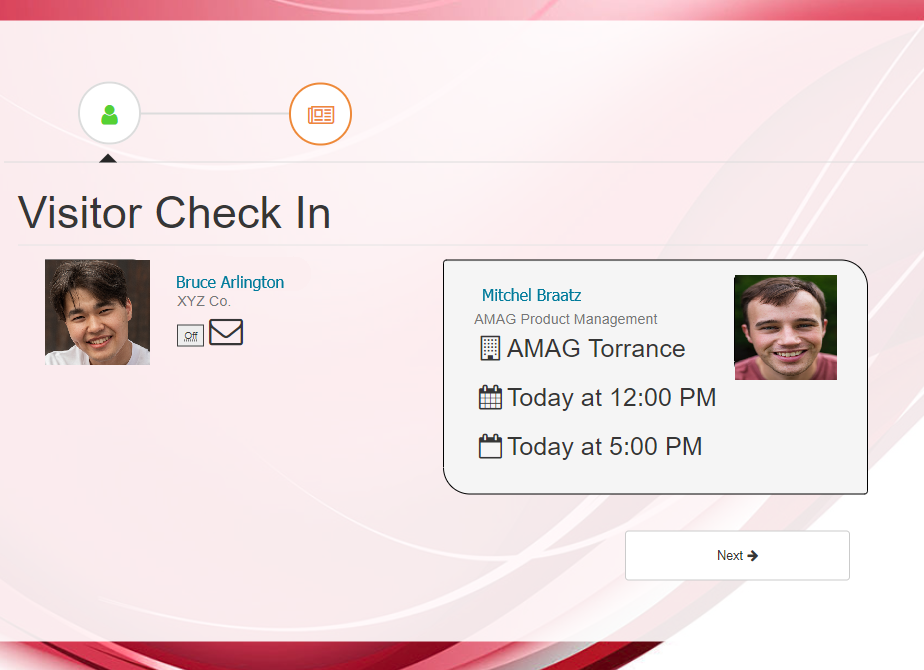
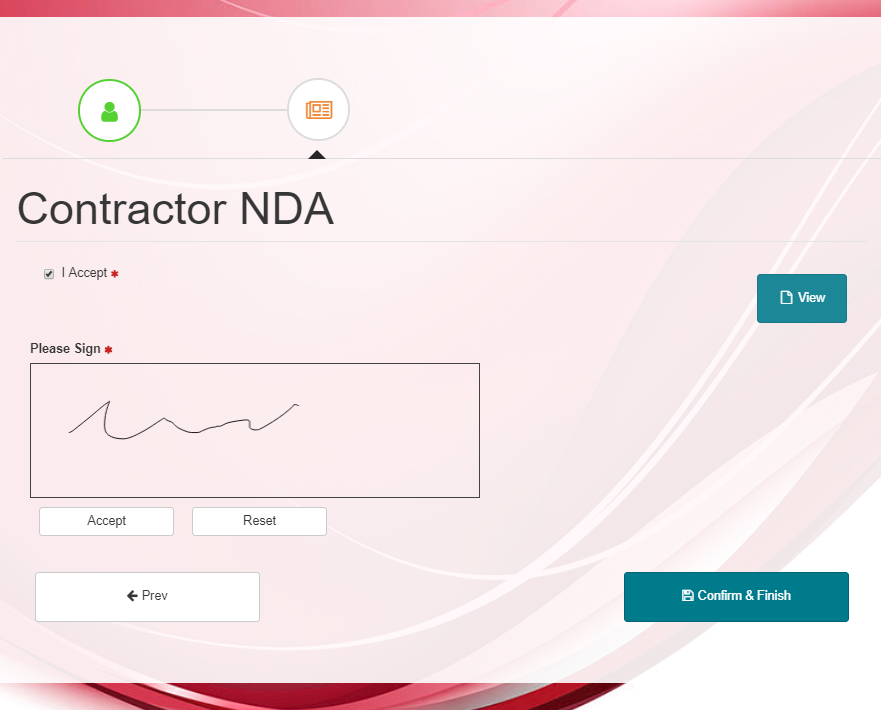
The user’s screen updates immediately to show the visitor’s signature and status of the policy documents. The user is now able to move on to the final stage of the check-in process.
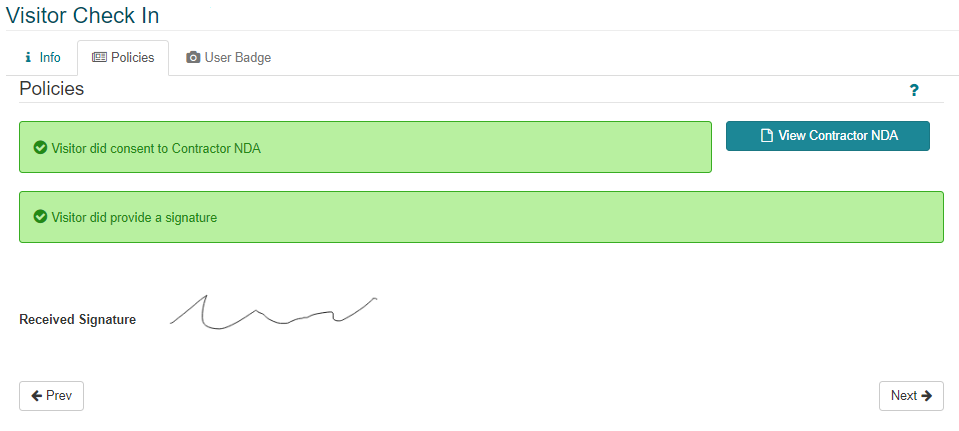
For more information please review the Guard Assist section of this guide.
Pin Code:
Provided PIN Code in Check-In Screen Configuration is not hidden, Receptionist can add a randomly generated PIN Code to the visitor's credential.
Explicit Access:
If configured, Receptionist can allow explicit access to various areas of the building by assigning specific access groups to the visitor. (Refer to Allow Explicit Access section within Creating a New Access Control Integration for further details.)
Visitor Matching a Watchlist Entry:
If a visit is scheduled for a visitor who may be a match for a Identity on the IDM Watch List then, once the Visit is approved (if necessary), a binoculars icon will appear next to the Visitor Name in Reception.
At check-in, an additional tab named Watch List Match will appear. Here, the Reception user can view all potential watchlist matches by opening up the Potential Suspect Information tab. They can also provide a reason for allowing the individual to gain access - dependent on configuration - using freeform text and/or a pre-defined response. (Refer to Watchlist Configuration in the IDM help guide for further details).
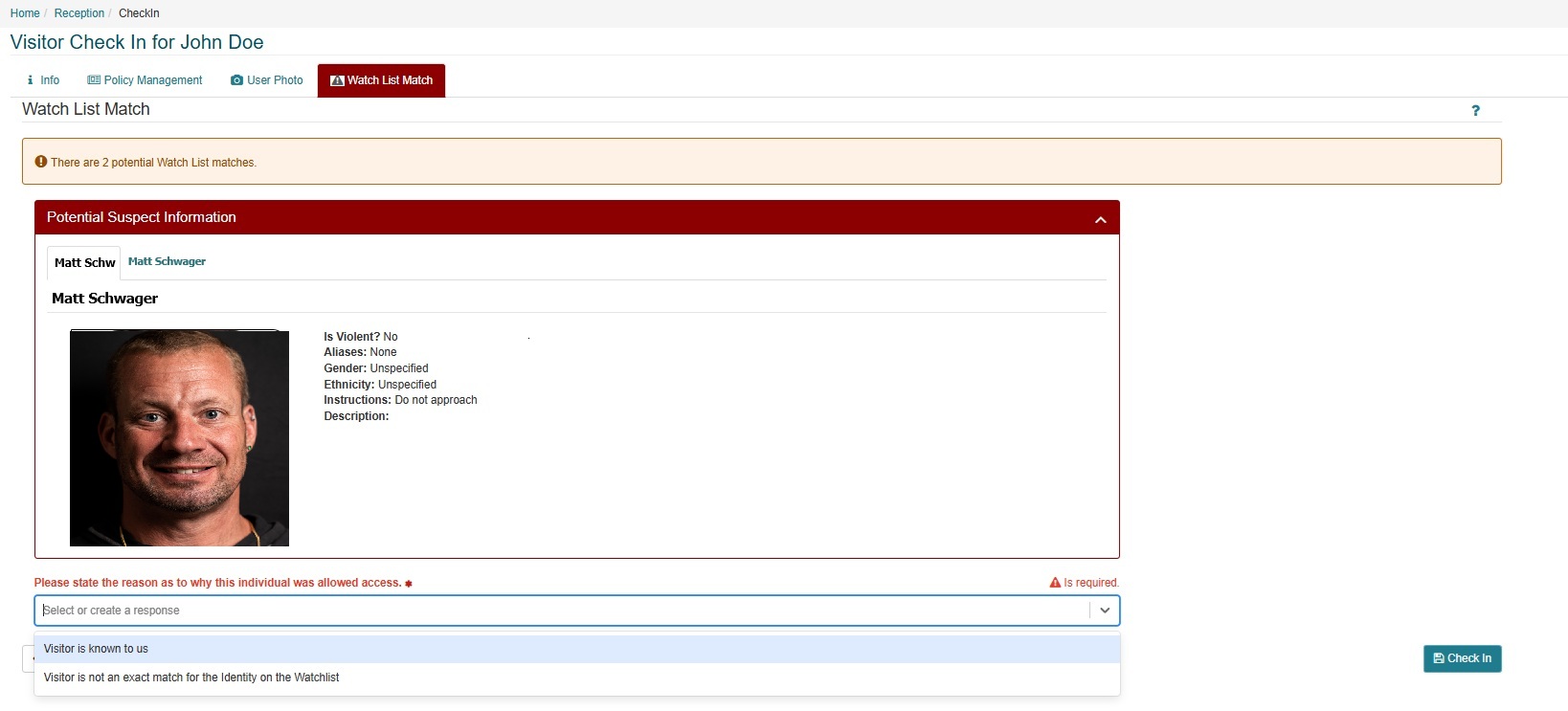
Visitor Check-Out:
Note
Images in this section show the access rights for available sections/tabs/pages for a user that has full access rights. Host Delegate, for example, will only have the My Visits and New Visit sections available.
GUEST provides three options for checking-out visitors:
Via the Reception Page: Visitors can be checked-out by users on the Reception page. It is easier to filter the list to see all visitors that are currently In Building, then click Check Out to check-out the specific visitor. The user also has the ability to click the Refresh button to make sure the most up to date visitor status is on display.
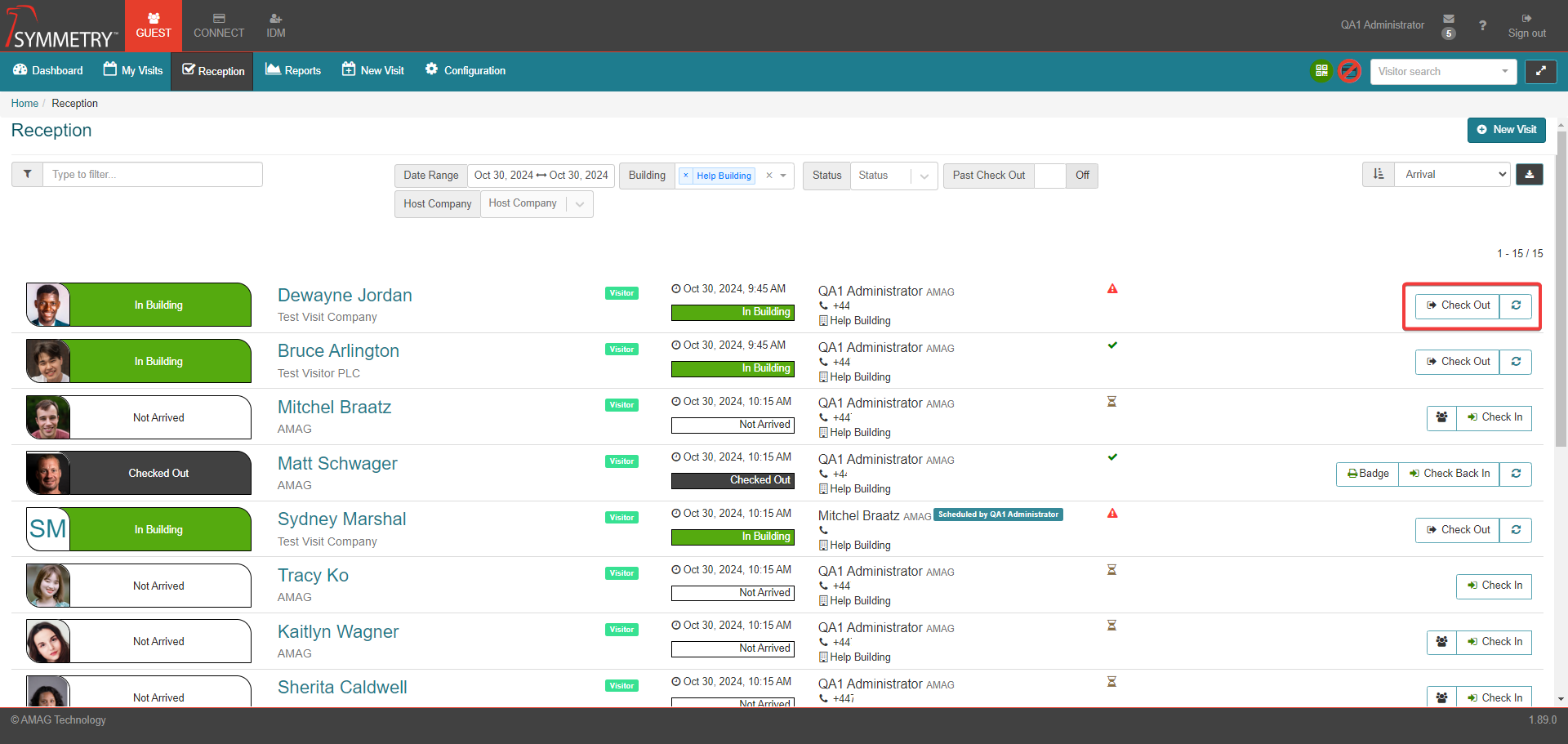
The visitor status will update to Checked Out and the user now has the option to check them back in and re-print their badge if required. This is very useful if a visitor leaves to go to lunch for example.
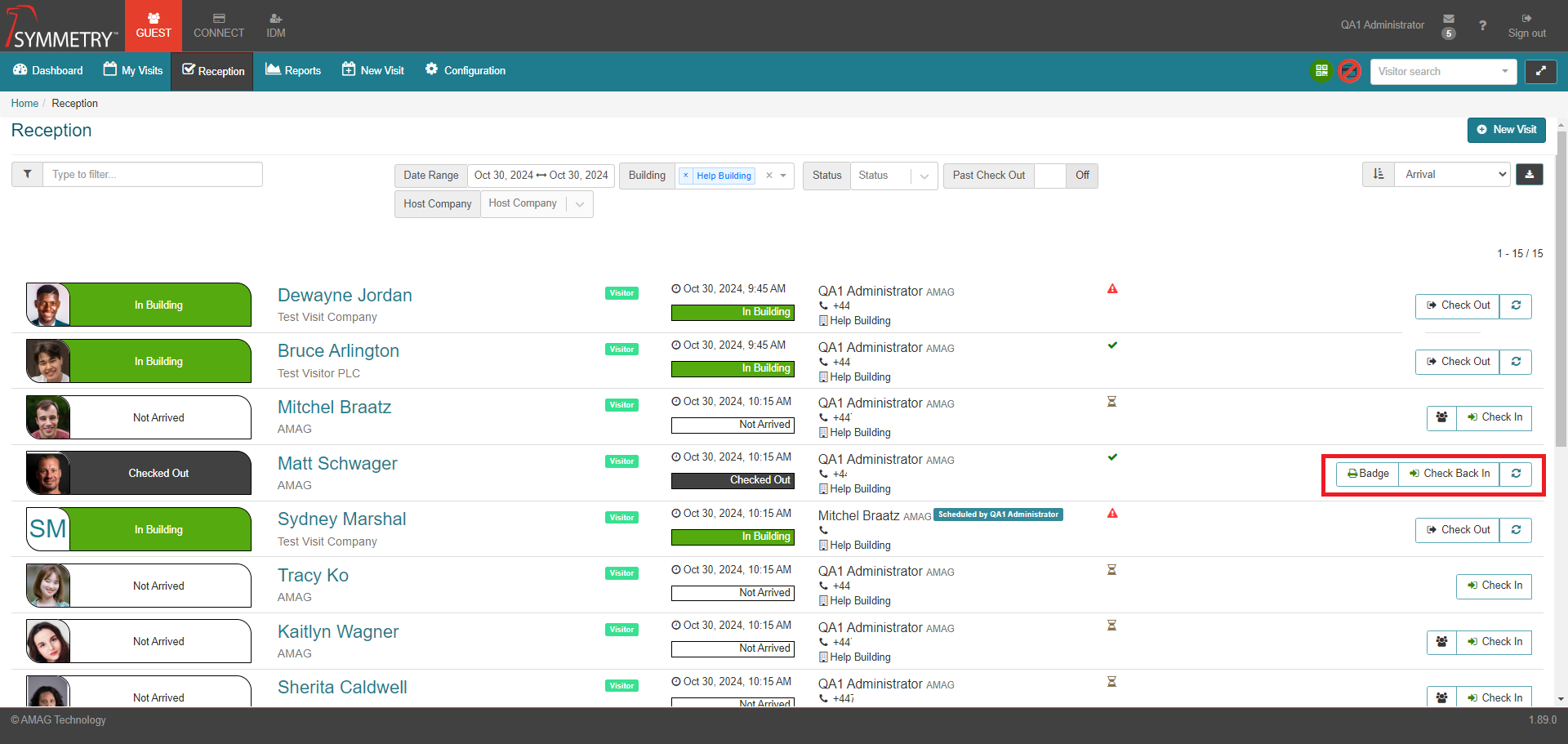
Host Check-Out: Provided Allow checkout by Host / Host Delegate is ticked for the specific Visit Type in Visit Type Configuration, a Host or Host Delegate can check out their Visitor from the building.

Automatically: GUEST supports the automatic check-out of visitors at the end of each day. The specific check-out time is configurable. Single and Multi-day visitors (visitors registered for more than one day) are configured separately, so single day visitors could be checked-out automatically, while multi-day visitors have to be checked out manually (as an example).
Note
For more information regarding the configuration options for visitor check-out, please review the Checkout Settings in the Visit Type Configuration section of this guide.
Registering a Walk-in Visitor:
Note
Images in this section show the access rights for available sections/tabs/pages for a user that has full access rights. A Reception user will not see Reports or Configuration.
An un-registered or Walk-in visitor needs to be registered by the reception user before they can be checked in. Reception users have access to the New Visit page and are able to register visitors as required. Reception users have an additional option, Immediate Check In which allows the visitor to be registered and then immediately begins the check-in process.
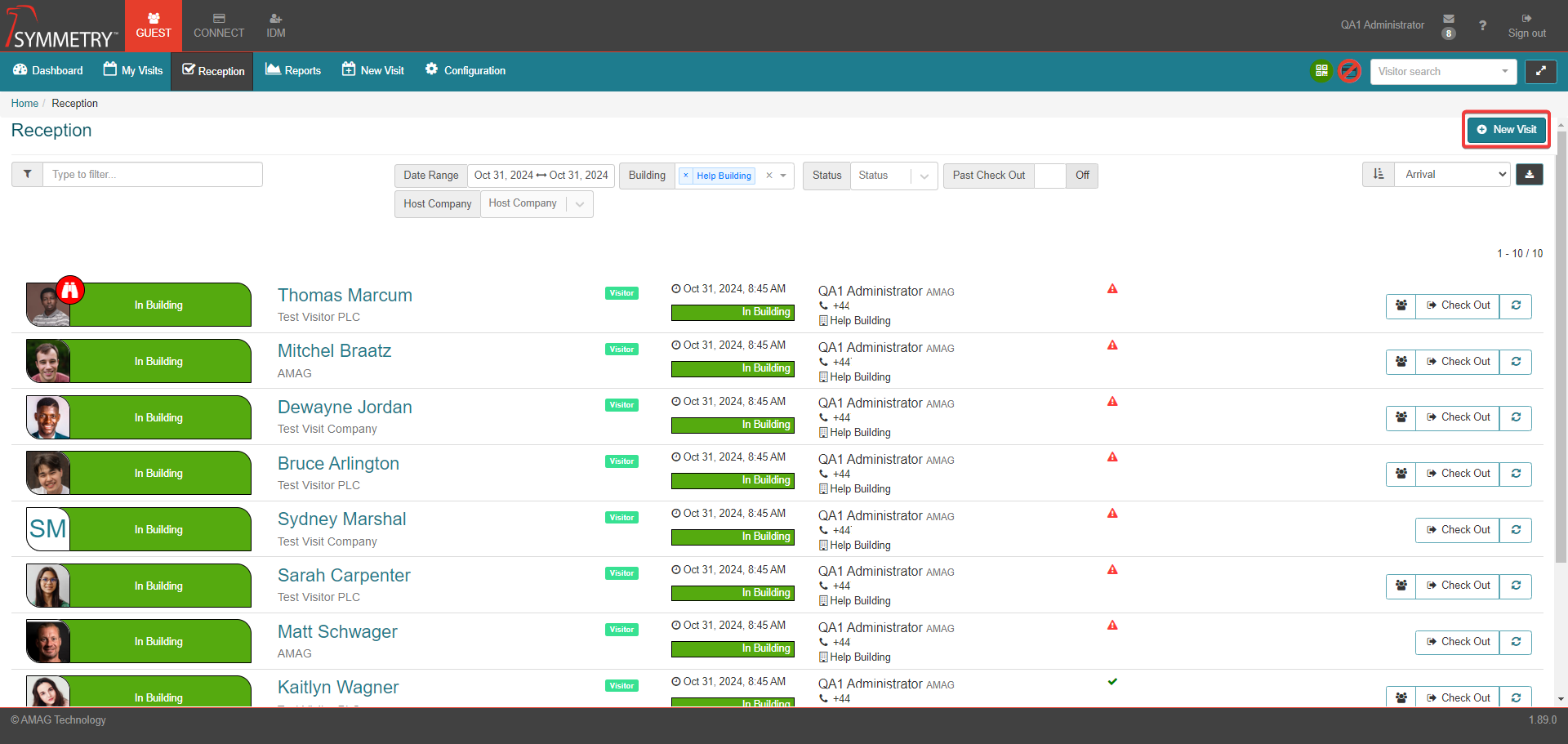
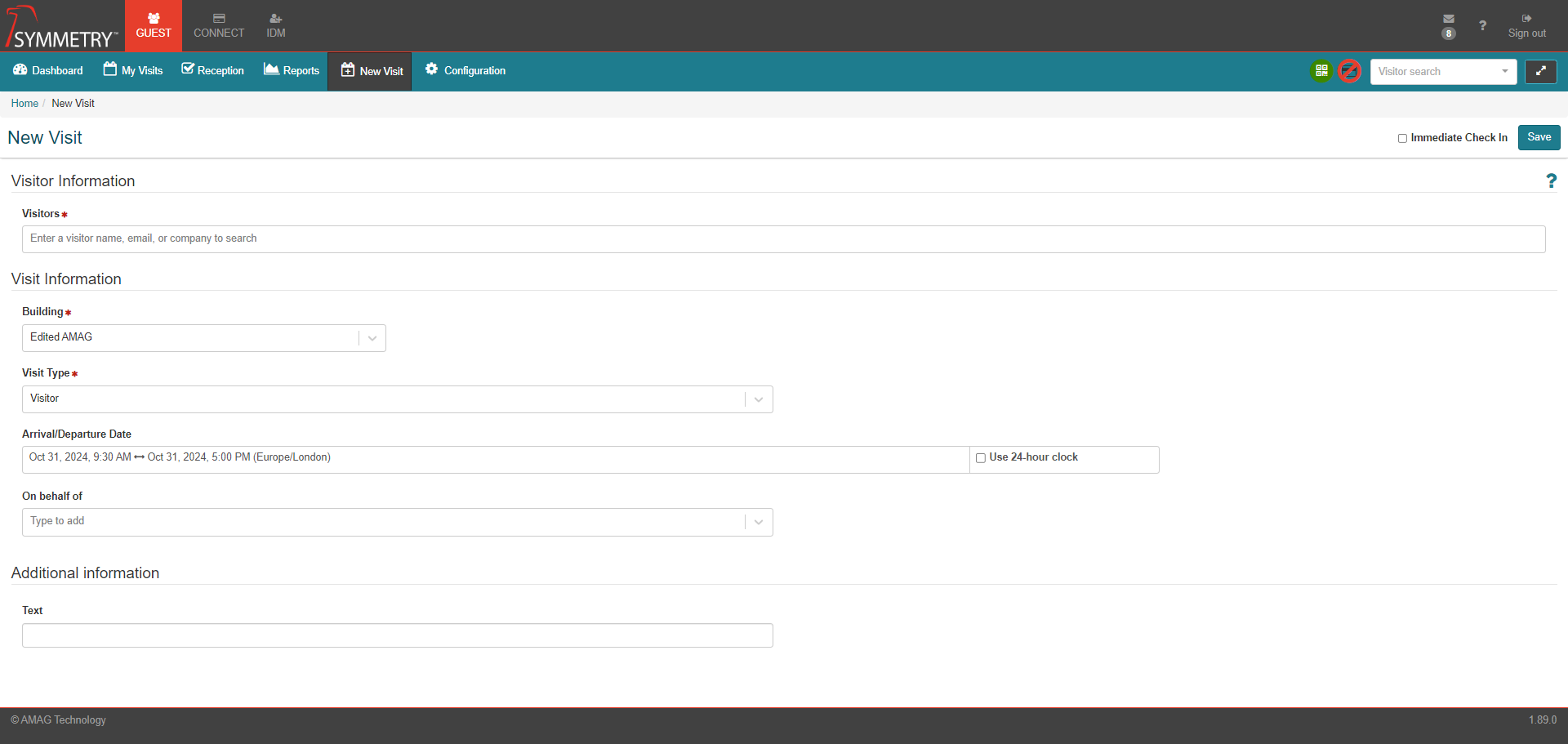
Note
The rest of the visitor registration process is exactly the same process followed by regular host users. For more information please review the Visitor Registration section in this guide.
Editing Visits and Visitors:
Note
Checked-in visits and visitors cannot be edited. Only visits/visitors that have not yet been checked-in can be edited.
Registered visits and visitors can be edited by reception users as follows:
On the Reception page, click on the visitor name.
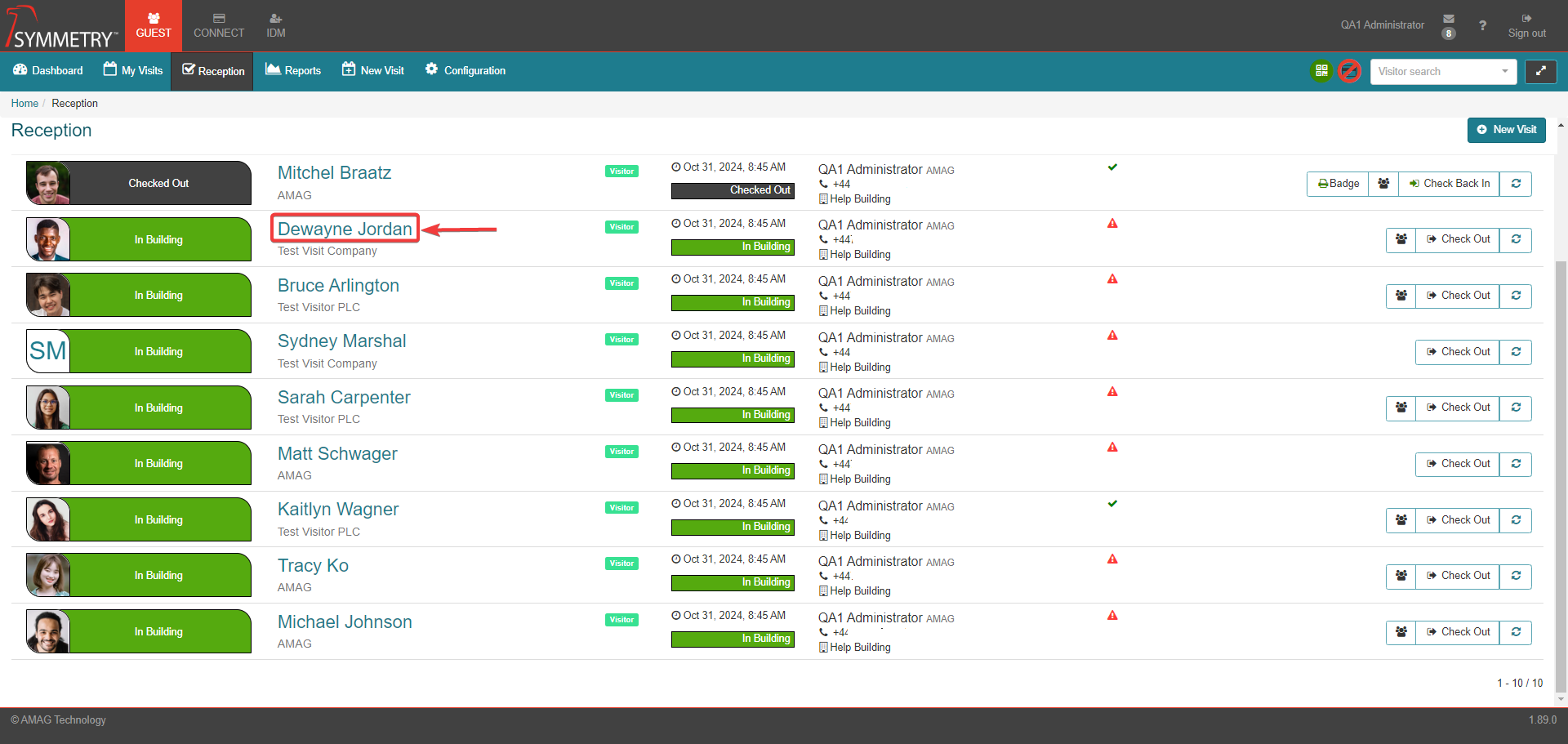
The user is presented with detailed information about the visit and visitor, with the options to edit the information as required. A comprehensive visit History is displayed at the bottom of the screen showing details about each previous (and upcoming) visit for the selected visitor. Click the Edit Visitor or Edit Visit button, depending on the information that is required to be edited. This will automatically allow the user to edit the information. All updates must be confirmed by clicking the Save button.
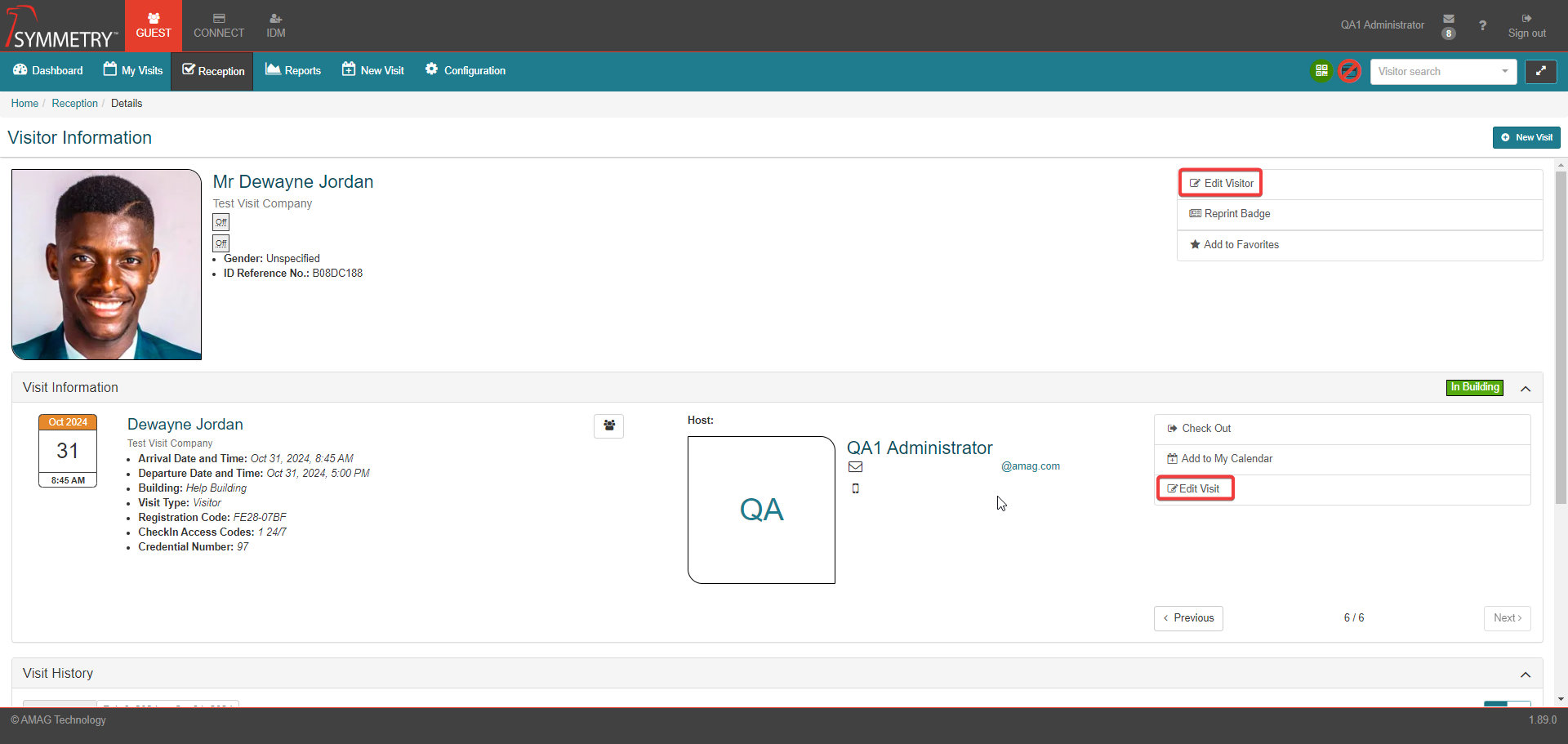

Visitor Watchlist Management:
The GUEST application automatically checks all visitors against the internal Watchlist when they are registered. If a visitor matches an existing record on the Watchlist, the visitor is flagged on the Reception page with a visual indicator of the match. Typically, security users of the system are also notified of the match via email. The Watchlist is managed on the IDM tab of the application.
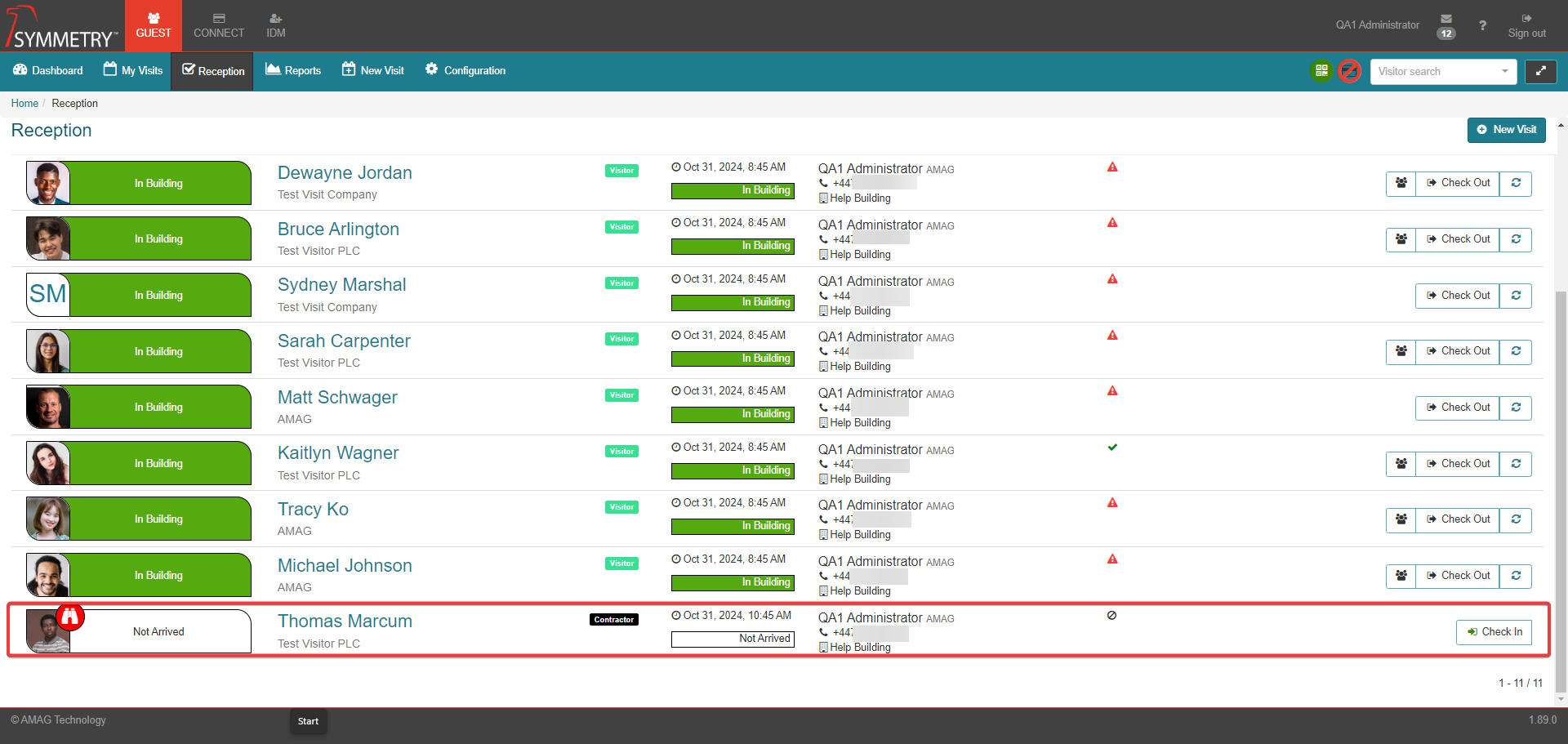
The Symbol below indicates that the visitor matches a person on the Watchlist.

Clicking the name of the visitor with the watchlist symbol assigned to them will open up the Visitor record and user can view details of the potential watchlist match.
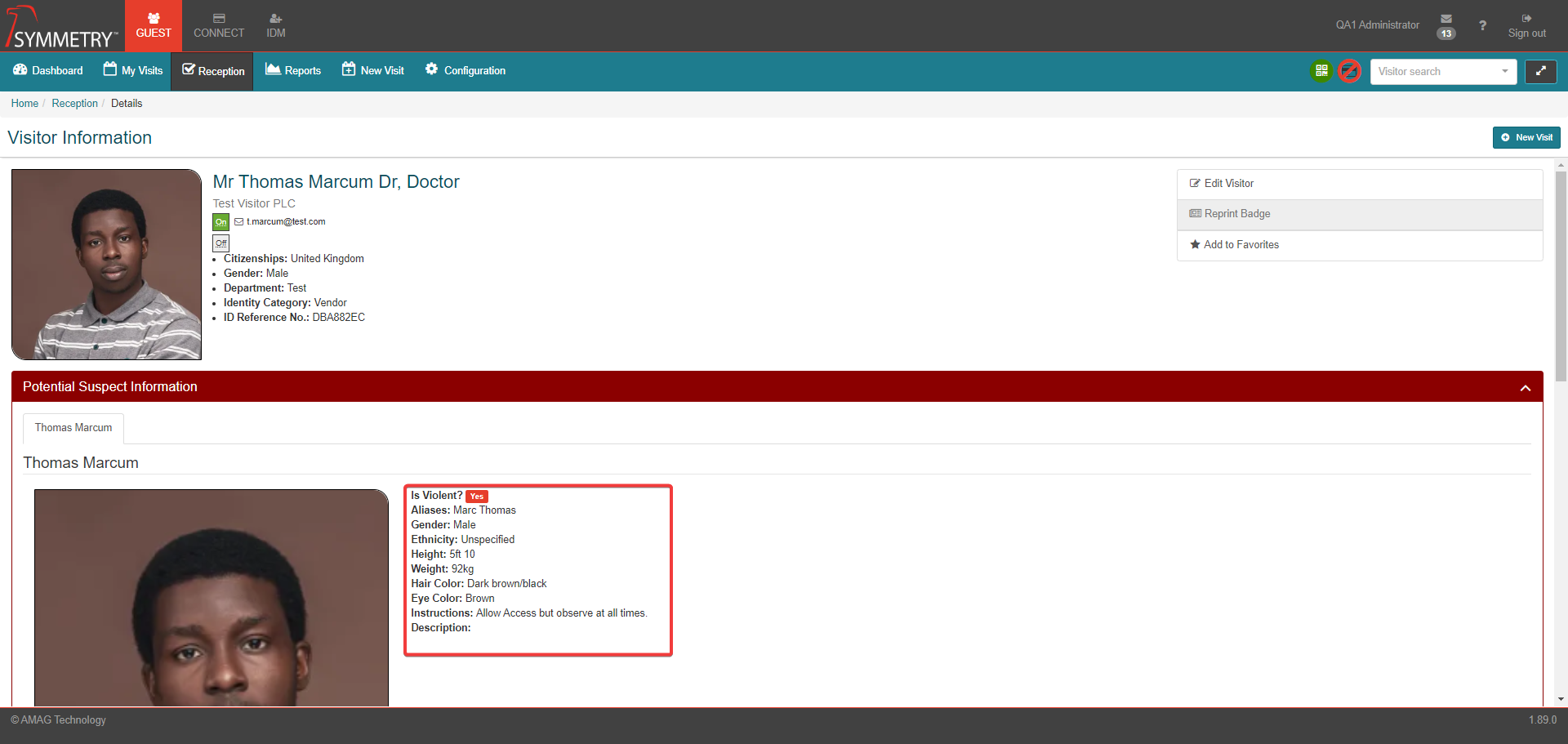
A visitor that matches a record on the Watchlist can be checked in, however this requires an additional override step during check-in. The user must provide a reason for allowing a visitor who matches a watchlist identity to check in. This response can be selected from an already created response from the drop down field, or a new response can be typed directly into the field.
